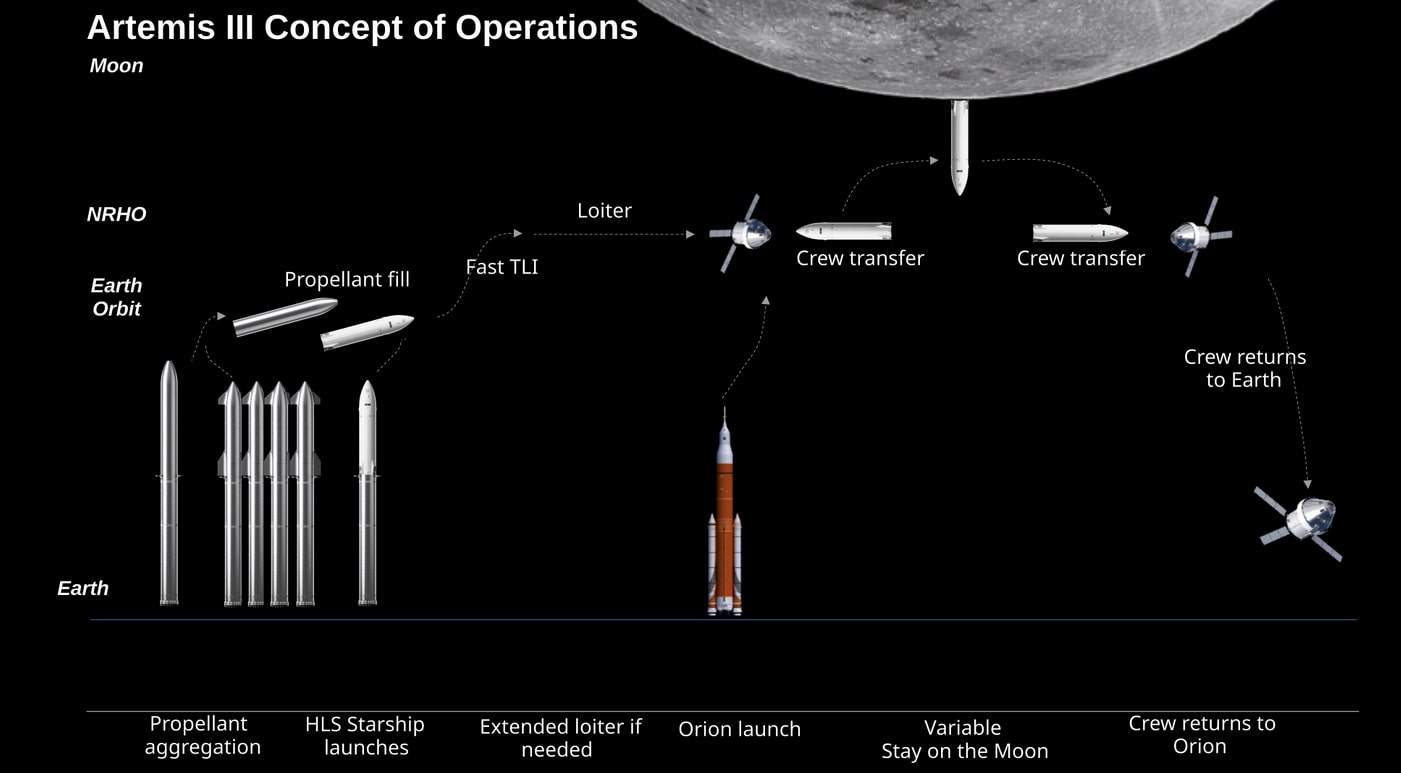Understanding The Causes Of Budget Overruns: Case Study: NASA

Welcome to your ultimate source for breaking news, trending updates, and in-depth stories from around the world. Whether it's politics, technology, entertainment, sports, or lifestyle, we bring you real-time updates that keep you informed and ahead of the curve.
Our team works tirelessly to ensure you never miss a moment. From the latest developments in global events to the most talked-about topics on social media, our news platform is designed to deliver accurate and timely information, all in one place.
Stay in the know and join thousands of readers who trust us for reliable, up-to-date content. Explore our expertly curated articles and dive deeper into the stories that matter to you. Visit NewsOneSMADCSTDO now and be part of the conversation. Don't miss out on the headlines that shape our world!
Table of Contents
Understanding the Causes of Budget Overruns: A NASA Case Study
Budget overruns plague projects across various sectors, but few are as scrutinized as those in the public sector, particularly in high-profile endeavors like space exploration. NASA, a global leader in space research, offers a compelling case study for understanding the complex causes of these costly overruns. While NASA's missions push the boundaries of human ingenuity, they also frequently grapple with budget challenges. This article delves into the key factors contributing to NASA budget overruns, drawing lessons applicable far beyond the realm of rocket science.
The Complexity of Space Exploration: A Breeding Ground for Overruns
NASA's projects are inherently complex, involving cutting-edge technology, intricate logistics, and extensive collaboration across diverse teams and international partners. This complexity contributes significantly to budget overruns in several ways:
-
Technological Uncertainty: Developing new technologies, particularly in aerospace engineering, is fraught with uncertainty. Unforeseen technical challenges can necessitate costly redesigns, delays, and additional testing, significantly impacting the budget. The James Webb Space Telescope, for instance, experienced numerous technical hurdles that pushed its budget far beyond initial projections.
-
Scope Creep: The initial scope of a project can expand over time, driven by evolving scientific understanding, technological advancements, or political pressures. This "scope creep" adds significant cost without adequate budgetary provision, leading to substantial overruns.
-
Cost Estimation Challenges: Accurately predicting the cost of such complex projects is notoriously difficult. Initial cost estimates often underestimate the true cost, leading to significant discrepancies later in the project lifecycle. This underestimation can be exacerbated by optimistic scheduling and a lack of contingency planning.
External Factors Fueling Budgetary Issues
Beyond the inherent challenges of space exploration, external factors also play a significant role in NASA's budget woes:
-
Political Interference: Changes in government priorities and political pressure can lead to shifting project goals and timelines, resulting in budget overruns. Funding cuts or unexpected delays can disrupt project schedules and increase overall costs.
-
Economic Fluctuations: Economic downturns can lead to reduced government funding, impacting NASA's ability to stay within budget. Inflation and fluctuating material costs also play a crucial role in increased expenditure.
-
Supply Chain Disruptions: Global supply chain issues can cause delays and price increases for crucial components, impacting the project timeline and budget. The reliance on specialized materials and technologies further exacerbates this problem.
Lessons Learned and Best Practices for Budget Management
NASA's experience provides valuable insights for improving budget management in large-scale projects:
-
Robust Cost Estimation: Implementing rigorous cost estimation techniques, incorporating contingency planning, and utilizing historical data can significantly improve the accuracy of budget projections.
-
Clear Project Definition: A concise and well-defined project scope with clear deliverables and milestones can minimize scope creep and prevent costly deviations.
-
Effective Risk Management: Identifying and mitigating potential risks early in the project lifecycle is crucial for avoiding unforeseen cost overruns.
-
Transparent Communication: Open communication between stakeholders, including engineers, managers, and policymakers, is crucial for effective budget management and timely intervention when challenges arise.
Conclusion:
NASA's history of budget overruns highlights the inherent challenges associated with large-scale, complex projects. However, by learning from past mistakes and implementing robust budget management practices, agencies like NASA can strive towards greater cost efficiency and ensure the successful completion of crucial scientific endeavors. The lessons learned from these overruns are valuable not only for space exploration but also for numerous other large-scale projects across various industries. By focusing on proactive planning, risk management, and transparent communication, we can mitigate the risk of future budget overruns and ensure the responsible allocation of resources.

Thank you for visiting our website, your trusted source for the latest updates and in-depth coverage on Understanding The Causes Of Budget Overruns: Case Study: NASA. We're committed to keeping you informed with timely and accurate information to meet your curiosity and needs.
If you have any questions, suggestions, or feedback, we'd love to hear from you. Your insights are valuable to us and help us improve to serve you better. Feel free to reach out through our contact page.
Don't forget to bookmark our website and check back regularly for the latest headlines and trending topics. See you next time, and thank you for being part of our growing community!
Featured Posts
-
 Anthony Edwards Rise A Threat To Steph Currys Dominance
May 07, 2025
Anthony Edwards Rise A Threat To Steph Currys Dominance
May 07, 2025 -
 Copom Ipca E Industria Desempenho Da Economia Brasileira E Implicacoes Dos Dados Da China
May 07, 2025
Copom Ipca E Industria Desempenho Da Economia Brasileira E Implicacoes Dos Dados Da China
May 07, 2025 -
 2025 Ncaa Womens Lacrosse Tournament Complete Bracket Schedule And Final Results
May 07, 2025
2025 Ncaa Womens Lacrosse Tournament Complete Bracket Schedule And Final Results
May 07, 2025 -
 Web3 Gaming News Rune Hero Begins Closed Beta Testing Mighty Action Heroes Enters Season 10
May 07, 2025
Web3 Gaming News Rune Hero Begins Closed Beta Testing Mighty Action Heroes Enters Season 10
May 07, 2025 -
 Warriors Game 7 Jitters Coach Kerrs Biggest Pre Match Headache
May 07, 2025
Warriors Game 7 Jitters Coach Kerrs Biggest Pre Match Headache
May 07, 2025
Latest Posts
-
 Jamila Rizvis Brain Tumor A Story Of Resilience And Advocacy
May 08, 2025
Jamila Rizvis Brain Tumor A Story Of Resilience And Advocacy
May 08, 2025 -
 Free Throw Merchant Jokic Responds To Oklahoma City Fans
May 08, 2025
Free Throw Merchant Jokic Responds To Oklahoma City Fans
May 08, 2025 -
 Rare Tumor Diagnosis A Subtle Symptoms Devastating Reveal
May 08, 2025
Rare Tumor Diagnosis A Subtle Symptoms Devastating Reveal
May 08, 2025 -
 Xdc Xdc Network Price 10 Drop But Bullish Sentiment Persists
May 08, 2025
Xdc Xdc Network Price 10 Drop But Bullish Sentiment Persists
May 08, 2025 -
 Western Australia Welcomes 18th Nrl Team After Arlc Government Agreement
May 08, 2025
Western Australia Welcomes 18th Nrl Team After Arlc Government Agreement
May 08, 2025
